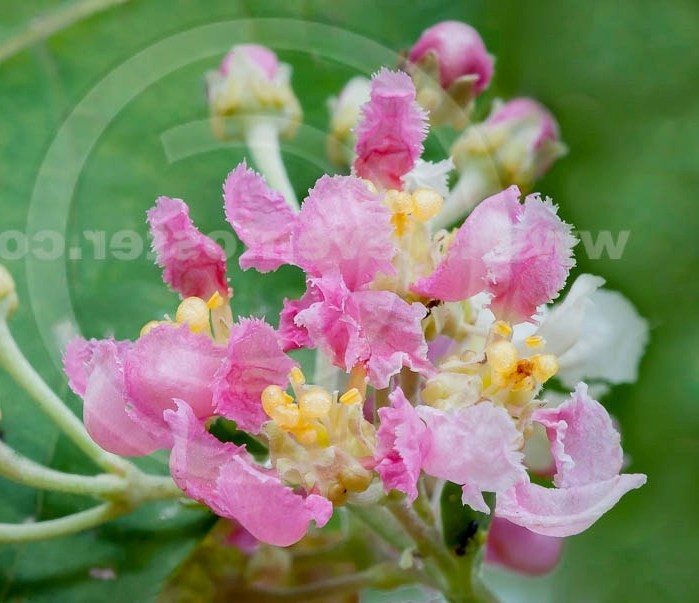Ayahuasca
(Banisteriopsis caapi)

Description
Banisteriopsis caapi, also known as ayahuasca, caapi or yagé (yage), is a South American liana of the family Malpighiaceae. It is one half of ayahuasca, a decoction with a long history of its entheogenic (connecting to spirit) use and its status as a "plant teacher" among the Indigenous peoples of the Amazon rainforest. According to The CRC World Dictionary of Plant Names by Umberto Quattrocchi, the naming of the genus Banisteriopsis was dedicated to John Banister, a 17th-century English clergyman and naturalist. An earlier name for the genus was Banisteria and the plant is sometimes referred to as Banisteria caapi. Other names include Banisteria quitensis, Banisteriopsis inebrians, and Banisteriopsis quitensis. Caapi is a giant vine with characteristic 12–14 mm (0.5–0.6 in) white or pale pink flowers which most commonly appear in January, but are known to bloom infrequently. It resembles Banisteriopsis membranifolia and Banisteriopsis muricata, both of which are related to caapi. First mention of caapi comes from early Spanish and Portuguese explorers and missionaries who visited South America in the 16th century, describing ayahuasca brews as “diabolic” and dangerous decoctions. Although utilised among the indigenous tribes of South America for hundreds and perhaps even thousands of years, caapi was not identified by westerners until 1851, when Richard Spruce, an English botanist, described it as a new species. He observed how Guahibos, the indigenous people of Llanos (Venezuela), chewed the bark of caapi instead of brewing it as a drink. In the United States, caapi is not specifically regulated. A 2006 Supreme Court decision involving caapi-containing ayahuasca, which also contains other plants containing the controlled substance DMT, introduced from the Psychotria viridis component, Gonzales v. O Centro Espirita Beneficente Uniao do Vegetal, was found in favor of the União do Vegetal, a Brazilian religious sect using the tea in their ceremonies and having around 130 members in the United States. In Australia, the harmala alkaloids are scheduled substances, including harmine and harmaline; however, the living vine, or other source plants are not scheduled in most states. In the State of Queensland as of March 2008, this distinction is now uncertain. In all states, the dried herb may or may not be considered a scheduled substance, dependent on court rulings.
Taxonomic tree:







